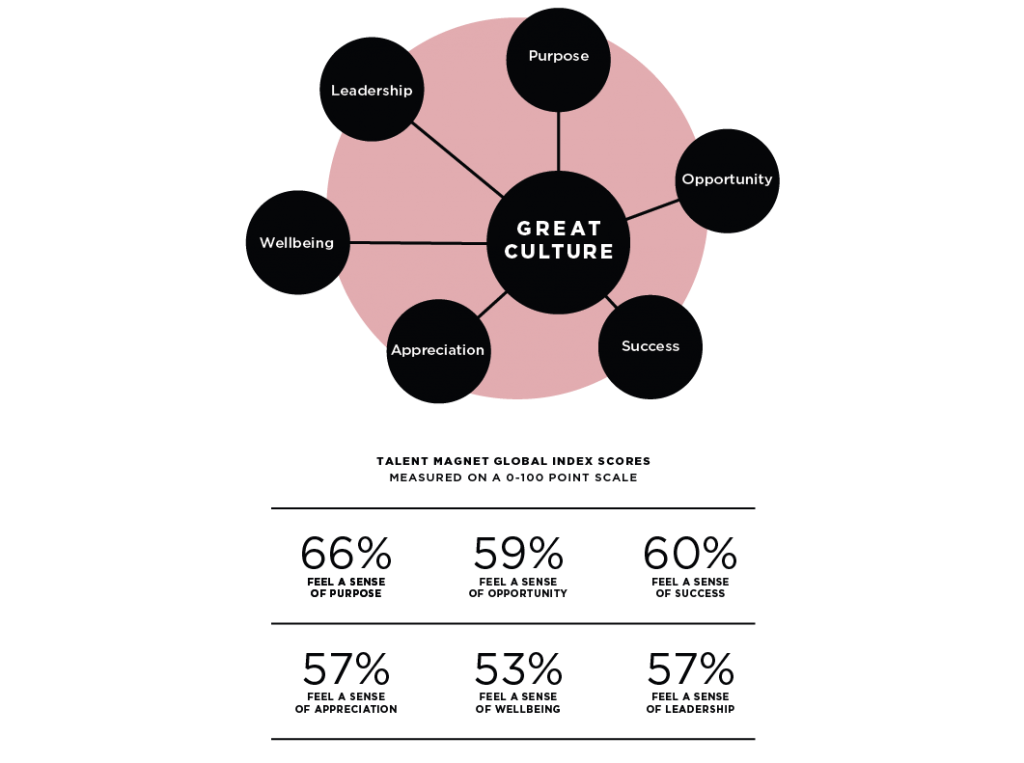 While there's been improvement in the factors crucial in attracting and retaining good employees, there's still substantial work to be done. Photo: Shutterstock)
While there's been improvement in the factors crucial in attracting and retaining good employees, there's still substantial work to be done. Photo: Shutterstock)
The workplace is changing, driven by automation and new technology, talent and skill shortages, and changing workplace expectations. One area not quite keeping up with the rapid pace of change? Workplace culture.
According to the 2020 Global Culture Report from O. C. Tanner, despite a "significant" level of investment in workplace culture, workers are increasingly frustrated with "conventional workplace practices" and are also increasingly burning out. In addition, they're not fond of "traditional leadership practices and philosophies."
Related: 7 steps to avoid a burnout culture
So what should employers be paying attention to? The everyday experiences workers have that shape their view of the workplace, instead of the "employee lifecycle" model of workers' experiences.
Fragmented strategies and siloed culture initiatives frustrate employees, and while some may have better experiences than others, the workforce as a whole is certainly not experiencing a cohesive and holistic culture. In fact, according to the report, only 66 percent of employees feel the employee experience matters at their organization.
"Connection is essential to workplace culture," the authors write. "It changes mindsets, and bridges the differences caused by a diverse and digitalized workforce. It helps companies adapt and thrive in the sea of change and culture disruptors. It builds community when people feel increasingly disconnected. And it creates a workplace where people come together and work toward a common purpose."
Younger workers in particular have higher expectations of the workplace, and companies that don't keep up will end up losing "their best people, their competitive edge, and ultimately, their customers," says the report. It adds that while there's been improvement in the six factors it sees as crucial in attracting and retaining good employees since last year's study, there's still substantial work to be done.
The six factors are the employee's sense of purpose; opportunity; success; appreciation; well-being; and leadership. Workers who do not feel valued in these ways can end up burning out—with 79 percent of employees experiencing some level of burnout at work and 59 percent of employees currently saying they'd go to a different company if offered a job offering the same benefits, pay and similar work.
However, at workplaces with employees buying into these so-called "talent magnets," revenue growth is better; in addition, there's more innovation, lower turnover and fewer layoffs. As an added benefit, their employees are more likely to recommend the company as a good place to work.
The six factors are interconnected and feed off one another, according to the report, moving employees to a better experience, and companies need to ditch traditional structures like 9-to-5 workdays, annual performance reviews and traditional leadership management practices if they hope to construct that sort of change in their workplace culture. The experiences employees are looking for today include more autonomy, more transparent communication, more mentoring and more flexibility in how and where they work.
Read more:
© 2025 ALM Global, LLC, All Rights Reserved. Request academic re-use from www.copyright.com. All other uses, submit a request to [email protected]. For more information visit Asset & Logo Licensing.








